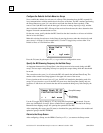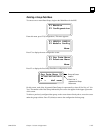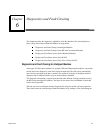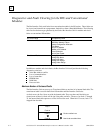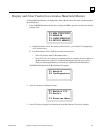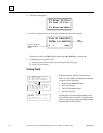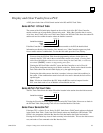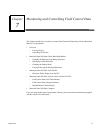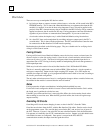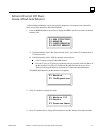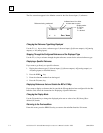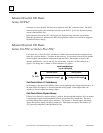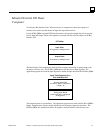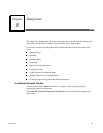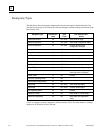
7-2 Field Control™ Genius® Bus Interface Unit User’s Manual
–
October 1999 GFK-0825F
7
Overview
There are two ways to manipulate I/O data in a station:
A
.
by forcing an input or output to assume a desired state or value that will be stored in the BIU's
EEPROM memory. This is done with a Hand-held Monitor; no equipment other than the I/O
module(s) is required. It can also be done using datagrams. Forces can only be applied to the
portions of the BIU's internal memory that are included in the BIU's I/O map. Forces cannot be
applied to references that lie outside the I/O map. Forcing guarantees consistent I/O behavior
regardless of power failures or communications interruptions. If you want to check out a
circuit at the station, the simplest way is with a Hand-held Monitor, using force/unforce.
B
.
for a host PLC, data can be manipulated by overriding an input or output state in the PLC's
override tables. This is done with the programmer. The PLC and Genius Bus Controller must
be connected to the Bus Interface Unit and must be operating.
Both methods are described on the following pages. They are valuable tools for verifying circuit
wiring in a Field Control station.
Forcing Circuits
Forcing an I/O circuit from a Hand-held Monitor causes the circuit to assume a selected state (for
discrete circuits) or value (for analog circuits). Once forced, a circuit retains the selected state or
value even if power is cycled. The forced circuit ignores data from an attached input device or
output data from a CPU. Forcing is the only method of manipulating I/O circuits that guarantees a
fixed output/input state.
While any circuit in the station is forced, the Bus Interface Unit's I/O Enabled LED blinks.
The force is normally applied and removed with an HHM. When unforced, a circuit responds to
real input or output data. Output circuits begin accepting CPU outputs. If no CPU outputs are
available, the output will either go to its programmed default state or hold its last state, according to
the circuit's preselected configuration.
The only other action that removes forces is a configuration change to delete a module. In that case,
forced data for that module is assumed obsolete and is discarded.
Notes
Forcing supercedes all other considerations, including default and hold last state.
If a discrete circuit configured to hold its last state is forced while the Bus Interface Unit is online,
the forced state is considered to be the last state.
If the BIU goes offline and the force is removed while offline, the circuit remains forced, rather
than assuming its actual last state. When the BIU goes back online, the circuit will again accept
outputs normally.
Overriding I/O Circuits
Overriding an I/O circuit means changing its state or value in the PLC's Override Tables.
Overrides must be done from the PLC, with the Bus Interface Unit online. Results can be viewed
on the programmer screen. The override data is stored in the PLC, and survives loss of power in
the PLC. However, if power is lost at the PLC but not at the Bus Interface Unit, the Bus Interface
Unit operates as it normally does if CPU communications are lost. Outputs go to their default state
or hold their last state (as configured). Once power is restored at the PLC and CPU
communications resume, the output overrides again take effect.



